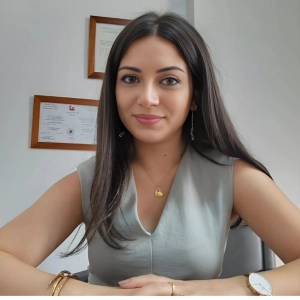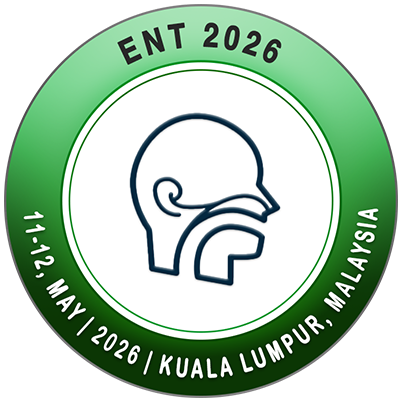
Isis Jardak
Phoenicia University, LebanonPresentation Title:
Bridging ENT and speech therapy: A multidisciplinary approach to voice disorders and professional voice care
Abstract
A collaborative and multidisciplinary approach between ENT specialists and speech and voice therapists is required to ensure an accurate diagnosis,
effective interventions, and maintained vocal health. Our talk underlines the importance of this approach and emphasizes the difference between
functional dysphonia and structural pathologies of the voice. This presentation positions speech and voice therapy as a crucial intervention in treating
these conditions to optimize recovery and treatment plan outcomes through its non-invasive rehabilitation strategies and techniques. Speech and voice
therapy sessions are tailored according to the needs of the individual suffering from a voice disorder. Treatment covers preventive strategies, vocal hygiene
education, and rehabilitation voice exercises for a sustainable vocal performance.
Introduction: Brief introduction of Isis Jardak - Clinical Speech and Voice Therapist - Based in Lebanon. The importance of collaboration between ENT
specialists and speech therapists. Summary of the three main topics:
1). The need for a multidisciplinary approach in voice disorders
2). Differentiating functional dysphonia from structural pathologies
3). Managing and preserving the voices of professional voice users
1. The Multidisciplinary approach to voice disorders. Voice disorders often require both medical and behavioral intervention. Limitations of medical or
surgical treatments alone without speech therapy.
Case Study: A patient who has benefitted from both surgical intervention and voice therapy combined (Dr. Fernand).
Role of ENT Surgeons: Diagnosis, medical/surgical intervention
Role of Speech Therapists: Functional voice assessment, therapy, and rehabilitation. Other professionals include singing teachers, physiotherapists (manual
therapy), and psychologists. When surgery is necessary vs. when voice therapy alone is sufficient pre- and post-operative voice therapy interventions for a
better outcome are shown in recent studies. Voice hygiene and preventive strategies to reduce recurrence
2. Functional Dysphonia vs. Structural Pathologies: The Speech Therapist’s Role- Definition: voice dysfunction without an obvious structural abnormality.
Common Causes: Muscle tension dysphonia, psychogenic factors, vocal overuse/misuse
Role of voice therapy in functional recovery. Structural pathologies: polyps, nodules, cysts, and other lesions. Voice therapy pre- and post-surgery
maximizes vocal recovery. Clinical markers to distinguish functional from struct.
3. Professional Voice Users: Prevention and Management Strategies.
Conclusion: Teachers, singers, actors, broadcasters, and call center agents are at high risk. Common voice problems in professionals and how they develop.
• Impact of voice disorders on the psychological and career aspects
• The importance of early screening for voice disorders
• Lifestyle changes and vocal hygiene
• Voice training and warm-up exercises
• Therapy plans
• Importance of manual therapy and breathing techniques
• Reinforcing the importance of ENT and speech therapist collaboration
• Encouraging ENT professionals to integrate speech and voice therapists in their treatment plans
Biography
Isis Jardak is a Speech and Voice Pathologist with over 10 years of clinical and academic experience. She holds a Master’s degree in Speech Therapy from Saint Joseph University
of Beirut and has specialized in voice rehabilitation through advanced training in France and Belgium. She currently teaches voice therapy and dyscalculia at the university
level, combining academic expertise with real-world clinical insight. Isis collaborates closely with medical doctors, ENT specialists, and other healthcare professionals to
provide holistic, evidence-based care to patients with a wide range of voice disorders, including functional and structural pathologies, particularly in professional voice users.
Her practice also includes pediatric speech and language therapy, addressing articulation, language delays, learning disabilities, and developmental disorders. She is known for
her patient-centered approach and commitment to interdisciplinary care. Isis also integrates her deep appreciation for music and vocal performance into her therapeutic lens,
enhancing her sensitivity to vocal quality, resonance, and performance-related demands, the skills that greatly benefit her work with professional voice users. In addition to
her clinical and teaching roles, Isis has made numerous TV appearances, raising public awareness on speech and voice-related topics. She is recognized for her clarity, warmth,
and dedication to advancing the field of communication sciences.


